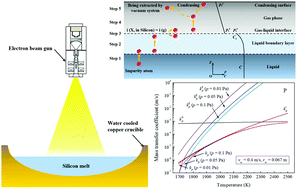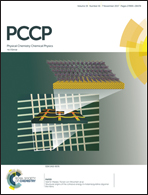Kinetics of volatile impurity removal from silicon by electron beam melting for photovoltaic applications
Abstract
A full domain control model is established for impurity transportation in the liquid phase, gas–liquid interface and gas phase of silicon to analyze the dynamic mechanics of impurity removal. The results show that the overall mass transfer coefficient mainly depends on the temperature and the chamber pressure. Its value increases with the increase of temperature or the decrease of chamber pressure. Under the same melting condition, the order of the overall mass transfer coefficients for P, Al and Ca is kP > kAl > kCa, indicating that P is easier to remove by evaporation. Mass transfer in the gas phase is the rate-controlling step for volatile impurity removal at the temperature above the melting point of silicon. The rate-controlling step transits to evaporation on the gas–liquid interface then to mass transfer in the liquid boundary layer as the temperature increases. During electron beam melting, the removal of P is controlled by both evaporation on the gas–liquid interface and mass transfer in the liquid boundary layer, and the removal of Al and Ca is controlled by evaporation on the gas–liquid interface.



 Please wait while we load your content...
Please wait while we load your content...